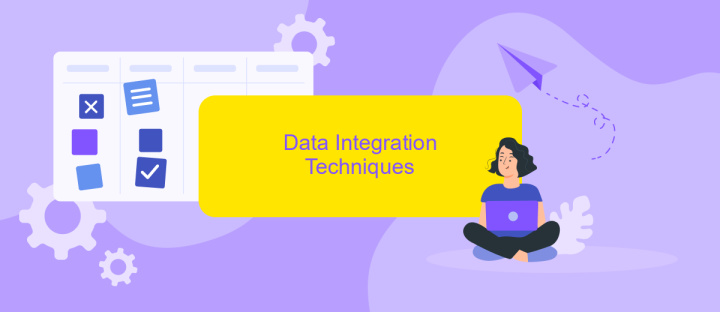Data Integration ETL
Data Integration ETL (Extract, Transform, Load) is a crucial process in modern data management, enabling the seamless consolidation of data from various sources into a unified repository. This process ensures data consistency, quality, and accessibility, thereby empowering businesses to make informed decisions. In this article, we explore the key components, benefits, and best practices of ETL in data integration.
Introduction and Overview
Data Integration ETL (Extract, Transform, Load) is a critical process in modern data management, enabling organizations to consolidate data from various sources into a unified system. By effectively integrating data, businesses can enhance decision-making, streamline operations, and gain valuable insights. ETL processes are fundamental for ensuring data consistency, accuracy, and accessibility across the enterprise.
- Extract: Gathering data from multiple sources such as databases, APIs, and flat files.
- Transform: Converting data into a suitable format and structure for analysis and reporting.
- Load: Inserting the transformed data into a target database or data warehouse.
Tools like ApiX-Drive facilitate seamless data integration by automating the ETL process, reducing manual intervention, and minimizing errors. ApiX-Drive supports a wide range of data sources and destinations, making it easier for organizations to set up and maintain integrations. By leveraging such services, businesses can focus more on analyzing data rather than managing it, thereby driving efficiency and innovation.
ETL Process and Architecture

The ETL process, which stands for Extract, Transform, and Load, is a fundamental procedure in data integration. During the extraction phase, data is collected from various sources such as databases, APIs, and flat files. This raw data is then transformed to fit the desired format, ensuring consistency and accuracy. The final step, loading, involves transferring the transformed data into a target system, typically a data warehouse or a data lake, where it can be easily accessed and analyzed.
An effective ETL architecture is crucial for seamless data integration. Modern ETL tools and services, like ApiX-Drive, simplify this process by offering automated workflows and real-time data synchronization. ApiX-Drive, for instance, allows users to set up integrations without extensive coding, making it easier to connect disparate systems. By leveraging such services, organizations can ensure that their data is consistently up-to-date and readily available for business intelligence and analytics, ultimately driving better decision-making.
Data Integration Techniques

Data integration involves combining data from different sources to provide a unified view. This process can be complex due to the variety of data formats and sources. Effective data integration techniques are essential for ensuring data consistency, accuracy, and reliability.
- ETL (Extract, Transform, Load): This traditional method involves extracting data from various sources, transforming it into a suitable format, and loading it into a data warehouse or database.
- ELT (Extract, Load, Transform): This approach loads raw data into a data warehouse first and then transforms it as needed, leveraging the processing power of modern databases.
- Data Virtualization: This technique provides a real-time, unified view of data from multiple sources without physically moving the data.
- API Integration: Tools like ApiX-Drive facilitate seamless integration by connecting various applications and automating data flow between them.
Choosing the right data integration technique depends on the specific needs and infrastructure of an organization. Modern tools like ApiX-Drive simplify the process by offering user-friendly interfaces and automation capabilities, enabling businesses to integrate data efficiently and effectively.
Challenges and Best Practices

Data Integration ETL (Extract, Transform, Load) presents several challenges, primarily due to the complexity of managing data from multiple sources. Ensuring data quality and consistency is critical, as poor data can lead to inaccurate analytics and decision-making. Additionally, handling large volumes of data efficiently requires robust infrastructure and optimized processes.
One of the best practices in this domain is to implement automated data integration tools like ApiX-Drive, which simplify the process of connecting various data sources and ensure seamless data flow. These tools can significantly reduce manual work and minimize errors, enhancing overall efficiency.
- Ensure data quality through rigorous validation and cleansing processes.
- Use automated tools like ApiX-Drive for seamless data integration.
- Optimize ETL processes to handle large data volumes effectively.
- Regularly monitor and audit data integration workflows.
By adhering to these best practices, organizations can overcome the challenges associated with Data Integration ETL. Utilizing advanced tools and maintaining a vigilant approach to data quality and process optimization will lead to more reliable and actionable insights.
- Automate the work of an online store or landing
- Empower through integration
- Don't spend money on programmers and integrators
- Save time by automating routine tasks
Conclusion and Future Trends
In conclusion, Data Integration ETL (Extract, Transform, Load) processes play a critical role in ensuring seamless data flow across various systems, enhancing data quality, and enabling comprehensive analytics. As organizations increasingly rely on data-driven decision-making, the importance of robust ETL solutions becomes ever more paramount. These solutions not only streamline operations but also provide a unified view of data, making it easier to derive actionable insights.
Looking ahead, the future of Data Integration ETL is set to be shaped by advancements in automation, artificial intelligence, and real-time processing. Services like ApiX-Drive are at the forefront of this evolution, offering versatile integration capabilities that simplify the connection between disparate systems. As these technologies continue to evolve, we can expect more intuitive, efficient, and scalable ETL solutions that will further empower businesses to harness the full potential of their data.
FAQ
What is Data Integration ETL?
Why is ETL important for businesses?
What are the common challenges in ETL processes?
How can automation tools assist in ETL processes?
What should be considered when choosing an ETL tool?
Do you want to achieve your goals in business, career and life faster and better? Do it with ApiX-Drive – a tool that will remove a significant part of the routine from workflows and free up additional time to achieve your goals. Test the capabilities of Apix-Drive for free – see for yourself the effectiveness of the tool.


